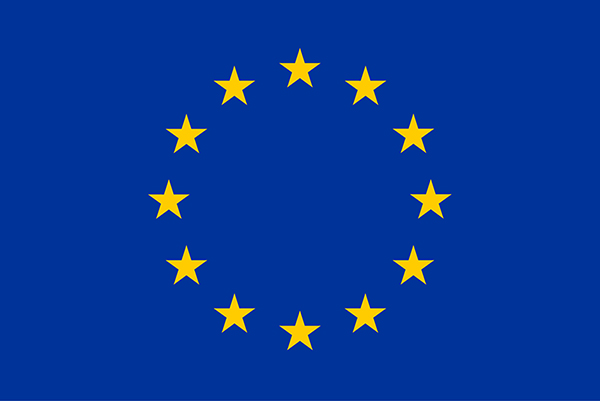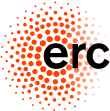Free (Stochastic) Analysis
Mini-workshop in Saarbrücken, March 23 - March 27, 2015

|

|
Funded by the ERC Advanced Grant Non-Commutative Distributions in Free Probability |
Organized by Tobias Mai, Roland Speicher, and John Williams.
Participants
Aim of the workshop
Accommodation
Schedule
Talks & Abstracts
Participants
- Daniel Alpay (Ben-Gurion University of the Negev, Be'er Sheva)
- Greg Anderson (University of Minnesota, Minneapolis)
- Serban Belinschi (Université Paul Sabatier, Toulouse)
- Hari Bercovici (Indiana University, Bloomington)
- Yoann Dabrowski (Institut Camille Jordan, Université Claude Bernard Lyon 1)
- Ohad Feldheim (University of Minnesota, Minneapolis)
- Roland Friedrich (Humboldt University, Berlin)
- J. William Helton (UC San Diego)
- Salma Kuhlmann (University of Konstanz)
- Naofumi Muraki (Iwate Prefectural University)
- Brent Nelson (University of California, Los Angeles)
- James Eldred Pascoe (UC San Diego)
- Giovanni Peccati (University of Luxembourg)
- Eli Shamovich (Ben-Gurion University of the Negev, Be'er Sheva)
- Victor Vinnikov (Ben-Gurion University of the Negev, Be'er Sheva)
Aim of the workshop
The idea of the workshop is to bring together people who are interestedin non-commutative or free analysis directions, as arising from and building
on the fundamental work of J.L. Taylor. Some emphasis will be on:
- relations to analytic questions around operator-valued free
probability theory; - the question what non-commutative distributions are, or at
least how they can be described; - questions around non-commutative function theory;
- also free Malliavin calculus, which is a kind of continuous
analogue of free analysis, will be represented.
background, and have them explain and discuss their concrete ideas and
problems. There should be enough time for discussions and giving one's own
understanding where the subject stands and the vision where it is or should
be heading to.
See here for a pdf version.
Accommodation
All participants are accommodated in Motel One downtown Saarbruecken. Fur further informationhow to get to the hotel and how to get to the math department, see our webpage with information for visitors.
Schedule
Each talk consists of 50 minutes plus 10 minutes discussion.All lectures take place in lecture hall III, building E2 5. This lecture hall is equipped with a projector and
six wide blackboards.
The coffee breaks and the reception are one floor down in the basement. The seminar rooms
Zeichensaal, Seminarraum 1 and Seminarraum 2 (in the basement) can be used for private discussions
during the conference.
Here is a pdf version of the program (will be distributed in printed form also during the reception).
Monday, 23 March
|
10:00 am 11:00 am 12:00 1:00 pm 2:00 pm 3:00 pm 3:30 pm |
Reception in the basement of building E2 5 Hari Bercovici Private Discussions Lunch Victor Vinnikov Coffee John Williams |
Tuesday, 24 March
|
10:00 am 11:00 am 11:30 am 12:00 1:00 pm 2:00 pm 3:00 pm 3:30 pm |
Yoann Dabrowski Coffee Problem Session Brent Nelson Lunch Greg Anderson Coffee Private Discussions |
Wednesday, 25 March
|
10:00 am 11:00 am 11:30 am 12:00 1:00 pm 2:00 pm 6:30 pm |
J. William Helton Coffee Problem Session James Eldred Pascoe Lunch Free afternoon/Excursion to the Völklinger Hütte (see also here) Dinner at Haus Brück |
Thursday, 26 March
|
10:00 am 11:00 am 11:30 am 12:00 1:00 pm 2:00 pm 3:00 pm 3:30 pm |
Daniel Alpay Coffee Problem Session Tobias Mai Lunch Giovanni Peccati Coffee Serban Belinschi |
Friday, 27 March
|
10:00 am 11:00 am 11:30 am 12:00 1:00 pm 2:00 pm |
Eli Shamovich Coffee Problem Session Roland Speicher Lunch End of the workshop |
Talks & Abstracts
- Daniel Alpay On free stochastic processes and their derivatives
We study a family of free stochastic processes whose covariance kernels may be derived as a transform of a tempered measure. These processes arise, for example, in consideration non-commutative analysis involving free probability. Their derivative are continuous operators from a space of non commutative test functions into a space of non commutative distributions. In this setting we define a stochastic integral and give some applications. This is joint work with Guy Salomon and Palle Jorgensen.
- Greg Anderson Algebraicity and "free-probabilistic parsing"
An n.c. (noncommutative) power series is called algebraic if it is a component of a solution of a proper system of polynomial equations. Algebraicity of the power series representing the joint law of several n.c. random variables is desirable. For example, it implies regularity properties of the laws of polynomials in the variables. It is natural to ask if algebraicity is preserved under formation of free products. We answer this positively by proving that algebraicity of the power series representing the joint distribution of n.c. random variables is equivalent to algebraicity of the power series representing their joint cumulants. We then give a simple representation of algebraic n.c. random variables in terms of operators built out of lowering operators and rational n.c. power series in raising operators. This provides, in a sense, a converse to the result of Shlyakhtenko and Skoufranis asserting algebraicity of the laws of polynomials in free semicirculars; our result says that EVERY algebraic joint distribution arises from families of operators built up in a simple way from the same raising and lowering operators from which semicirculars are constructed.
Our results constitute an analogue of the Chomsky-Schützenberger representation theorem. Indeed, our work consists mainly of extensions and reformulations of ideas from computer science and formal language theory. In the talk, assuming no prior knowledge of computer science, we briefly review background and key concepts, make some translations from computer science and describe their parallels in the realm of free probability.
Joint work with Ohad Feldheim.
- Serban Belinschi Geometric properties of the subordination function for operator-valued free convolution semigroups
In a 2011 joint work with Anshelevich, Février and Nica, we have extended the notion of partial free convolution semigroups of Nica and Speicher to the operator-valued context. The operator-valued Cauchy-Stieltjes transforms of measures in such semigroups turn out to satisfy an analytic subordination property. In this talk we will discuss a few geometric properties of the subordination functions involved. The proofs of these properties rely heavily (and, it seems, in an essential way) on the non-commutative structure of the subordination function.
- Hari Bercovici Superconvergence to an infinitely divisible law
It was known for some time that the normal averages of a f.i.d. sequence of variables with finite variance converge to the semicircle law not only in distribution, but also uniformly at the level of densities. We show that this phenomenon holds for arbitrary limit measures (except, of course, in the neighborhood of the atom of the limit measure when such an atom exists). This is joint work with J.-C. Wang and P. Zhong.
- Yoann Dabrowski Non-commutative analytic functions relative to a covariance map.
Non-commutative power series play a crucial role in various places in free probability, from R-transforms to analytic subordination or monotone transport. In conditional free probability relative to a von Neumann algebra B, free semicircular variables with a covariance map η are a basic object and the covariance map captures some algebraic relations of B and the semicircular variables. One can thus look for a class of analytic functions capturing these relations, and thus better suited for (transporting) variables similar to semicircular with covariance map η, as for instance captured by free Fisher information relative to η defined by Shlyakhtenko. We study such a class of analytic functions motivated by free transport and will explain how one can get absence of analytic relations among this class of functions under an assumption of free Fisher information relative to η. This is in the spirit of generalizing recent works of Mai, Speicher, Weber and Shlyakhtenko.
To obtain an algebraically and analytically convenient class of functions, one mostly needs to obtain a right class of multilinear operations. One looks for expected composition properties for analytic functions. This will suggest variants of Haagerup tensor products as a starting point. But to capture exactly the same relations as the one for semicircular variables, one also needs embeddings in various Hilbert spaces obtained from the covariance map η. Finally, constructing some projection will also require some weak-* continuity of this Hilbert space embedding. Guided by those requirements, we will explain an Haagerup tensor product relative to a covariance map generalizing module (extended) Haagerup tensor product (corresponding to η=EC a conditional expectation) and enabling to obtain nice classes of analytic functions.
- J. William Helton Linearization vs realization
A powerful technique in free probability called "linearization" allows one to compute probability distributions of a function f of random n × n matrices as n → ∞. "Linearization" it turns out has been highly developed for about 50 years in a variety of areas ranging from system engineering to automata theory to ring theory. Indeed a linearization is often called a noncommutative system realization. Here one has a rational function f of variables x1,...,xg and evaluates f on matrices of all sizes.
There is an extensive family of results in this context, and one would like to apply these readily to free probability. The difficulty with this is that free probability requires evaluation on operators in an algebra A to be well behaved. We shall see (using deep results of PM Cohn) that if A is a stably finite C*-algebra (eg. one with an everywhere finite trace), then evaluation behaves well, so classical realization results can be applied directly to free probability set in a type II factor.
- Tobias Mai Regularity of distributions of Wigner integrals
With their seminal work in 1998, P. Biane and R. Speicher founded a non-commutative counterpart of classical stochastic calculus and Malliavin calculus in the realm of free probability. In particular, they introduced the so-called Wigner integrals as the free analogue of the classical Wiener integrals.
In my talk, I will discuss how recent results that were obtained in joint work with R. Speicher and M. Weber, which under certain conditions allowed to exclude atoms in the distributions of non-constant polynomials in finitely many non-commutative random variables, can be extended and applied to Wigner integrals.
- Brent Nelson Bi-free cumulants and a multiplicative bi-free convolution
By using bi-non-crossing diagrams, my coauthors and I were able to show that Voiculescu's definition of bi-free independence (in terms of representations on free product spaces) is equivalent to Mastnak and Nica's definition of combinatorial-bi-free independence (i.e. mixed bi-free cumulants vanish). In this talk I will present the definition of these bi-free cumulants and explore the incident algebra on the lattice BNC: a class of partitions corresponding to bi-non-crossing diagrams. Many of the properties enjoyed by free cumulants generalize to bi-free cumulants. In particular, I will show that the formulae satisfied by the free cumulants of a multiplicative convolution are also satisfied by the bi-free cumulants under an appropriate generalization of the multiplicative convolution.
(Based on joint work with Ian Charlesworth and Paul Skoufranis.)
- James Eldred Pascoe Representation formulas for Pick functions in two complex variables and free function theory
We discuss how operator theoretic techniques that have been applied in one and two complex variables can be used in the free setting. Of specific interest are properties of analogues of Pick functions, which in one complex variable are analytic functions from the upper half plane into itself. Nevanlinna showed that all Pick functions which satisfy certain asymptotic conditions at infinity can be represented as the Cauchy transforms of finite measures. In two complex variables and free analysis, the analogues of Pick functions have similar representations. We will demonstrate the theory and the method of deriving operator theoretic representations for such functions. Furthermore, we will discuss recent work extending operator theoretic representations of Pick functions to domains more directly related to free probability.
- Giovanni Peccati Some limit theorems on free chaoses
I will review some recent advances concerning central and non-central limit theorems for sequences of free random variables having either the form of a multiple Wigner integral with respect to a random measure with freely independent increments, or of a homogeneous sum based on freely independent random variables with arbitrary distributions. Some phenomena related to universality, transfer principles and threshold phenomena will be discussed during the talk.
- Eli Shamovich Taylor Joint Spectrum for Non-Selfadjoint Representations of Lie Algebras
In this talk we will discuss non-selfadjoint representations of real finite dimensional Lie algebras. We will embed each representation in a construct we call a vessel. We will then relate the theory of the representation with a system of partial differential equations on the simply connected Lie group associated to our Lie algebra. Such systems can be studied using "frequency domain" theory or in other words by means of harmonic analysis on the group. This leads us to consider the Taylor joint spectrum for Lie algebras. We will define the joint spectrum and describe some application in the case of the Lie algebra of the ax+b Lie group.
- Victor Vinnikov Noncommutative reproducing kernel Hilbert spaces
I will discuss the analogue of the classical Aronszajn's theory of reproducing kernel Hilbert spaces in the setting of noncommutative functions and noncommutative completely positive kernels. The completely positive kernels of BBLS [Barreto-Bhat-Liebscher-Skeide] also appear as a special and in some sense commutative version [since the noncommutative set where the kernel is defined consists of diagonal matrices]. In addition to their intrinsic interest, noncommutative completely positive kernels provide a proper framework for the study of classical interpolation problems for noncommutative functions, cf. the work of Muhly-Solel and Agler-McCarthy.
This is a joint work with Joe Ball and Gregory Marx.
- John Williams B-Valued Free Convolution for Operators Affiliated to a Tracial Von Neumann Algebra
In this talk, we give function theoretic characterizations of the unbounded operators affiliated to a finite von Neumann algebra. Using these characterizations, we extend the various convolution operations to B-free, unbounded random variables.
| Updated: 23 March 2015 Tobias Mai | Impressum |

